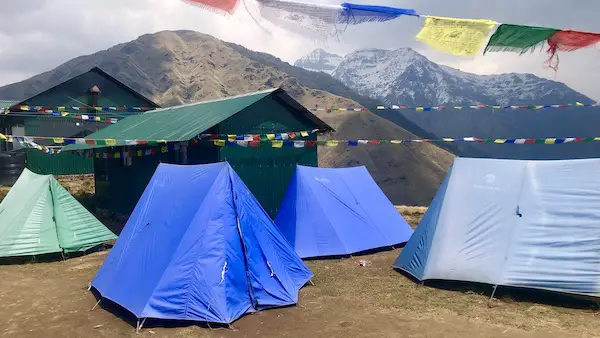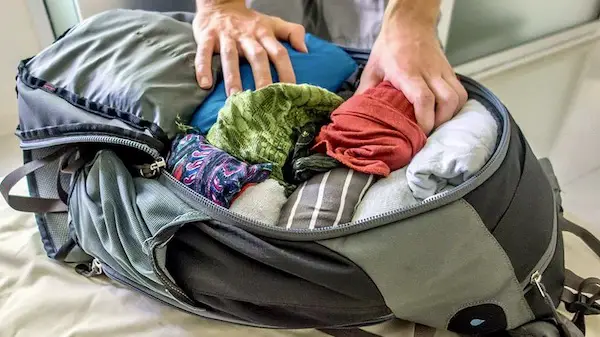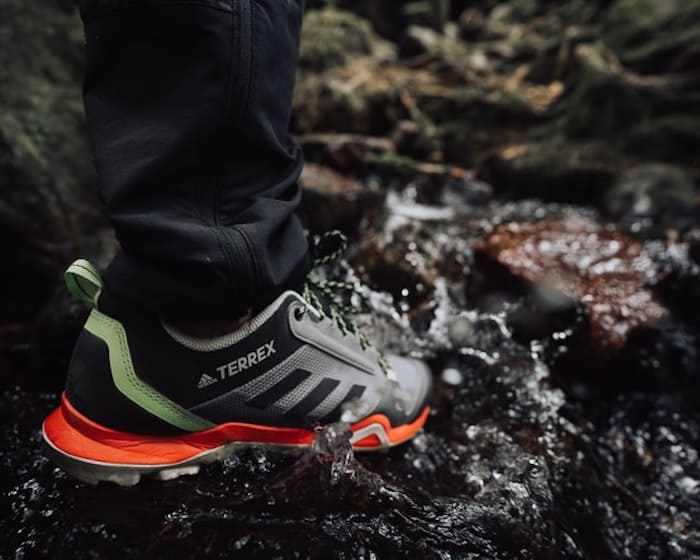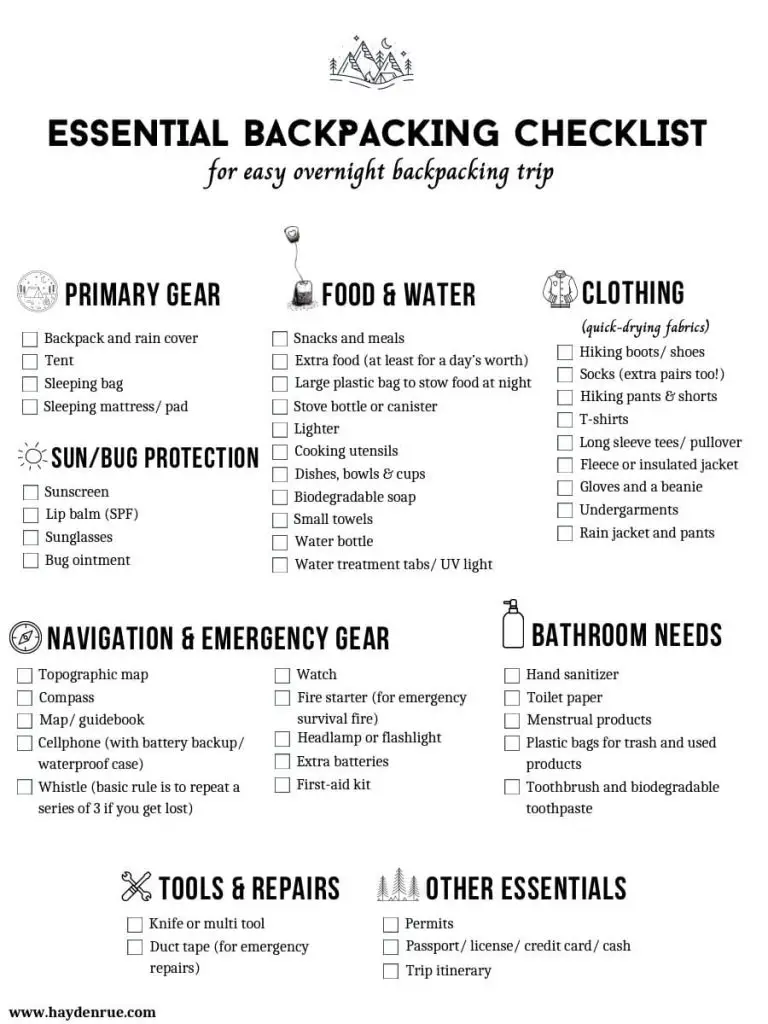Backpacking combines hiking or trekking with backcountry camping, offering an adventurous opportunity to expand your horizons beyond traditional car campgrounds and indulge in a more immersive outdoor experience. Unlike day hiking, a crucial aspect of backpacking is the size of your pack. Your backpack becomes your lifeline as it carries all the essentials you need, prompting careful consideration in selecting each item. With that in mind, it may be difficult for some to prepare for their first hike. That is why we have this backpacking for beginners guide!
In this beginners backpacking guide, we cover everything you need to know so you can start backpacking like an expert! To get a better understanding how the activities differ, consider checking out our hiking vs trekking: what’s the difference blog! Let’s start with an overview of the four steps for a successful first backpacking trip.
Backpacking for Beginners: 4 Steps for your first backpacking trip
- Start with an easy destination: For beginners, choose a short overnight hike or trek close to home.
- Get the necessary gear and clothing: Borrow, and thrift shop for gear to start with to save money. Try out hiking first, so you know if you want to invest in the activity long term.
- Plan for your meals: Easy to cook, or just add water, meals are best. These will make cooking much easier to start with. Plus less dishes and equipment are needed!
- Prepare and Get ready for your first trip: Prepare your physical condition by training with a backpack fully loaded for the intended hike. Obtain the necessary permits and take time to refresh your knowledge of – Leave no trace principles.
If you have a knowledgeable friend in backpacking who understands your preferences, consider inviting them to join you as a guide. However, it is also entirely possible to embark on a solo backpacking adventure, which is the main focus of this article. We strongly recommend bringing a companion regardless of their backpacking expertise, as it enhances safety and enjoyment during the trip.
Steps to backpacking, hiking and trekking for Beginners:
Below we will go into further detail about the four steps highlighted above to help beginners get into backpacking, hiking and trekking. These steps are to help people just starting out in backpacking, and offer steps to consider before you set off on your trip!
They will help you save money, make backpacking easier, and make sure you get off on the right foot. This way, you can get your first couple hikes under your belt, before you decide to invest heavily into gear and equipment!
1. Start with an easy destination:
The crucial advice here is to lean towards simplicity. If the hike is excessively challenging, it can result in an unpleasant experience. On the other hand, if it’s too easy, it allows for ample time to explore the surroundings of your campsite.
Follow these quick tips while deciding where to go backpacking as a beginner for the first time:
- Seek advice from experienced backpackers: Consult with hiking club members, online forums and facebook groups, and refer to hiking guidebooks for trip recommendations.
- Choose a location near your home: Prioritize spending more time hiking than driving and ensure you have sufficient daylight hours to reach your campsite before dark.
- Opt for shorter distances: Plan for a few miles roundtrip, considering that walking with a heavier pack is slower and more challenging than your typical day hike.
- Target moderate elevation gain: Select a trail with less elevation gain than your usual day hike, as mileage alone does not provide the complete picture.
- Select a popular trail and established campsite: It is beneficial to have fellow hikers and campers nearby who can offer assistance if needed.
- Verify water availability near your campsite: Lakes or large rivers are reliable water sources, but double-check with local land managers regarding streams and springs that may dry up, as well as the cleanliness of the water.
- Consider leaving kids and pets behind on your first trip: Although they can be enjoyable companions, their presence may add complications.
- Favor summertime conditions: Unless extreme heat or fire danger is a concern at your destination, choose mid-summer for your trek to maximize daylight hours and increase the likelihood of comfortable weather. Always check weather forecasts and be prepared to cancel or turn back if a storm approaches.
- Explore “walk-in” campgrounds: Some state and national parks offer campgrounds located within approximately a mile of car campgrounds. Staying at these sites provides an excellent opportunity to ease into backpacking.
2. Get the necessary gear and clothing:
Minimize your initial expenses by borrowing or renting the most expensive items such as the tent, sleeping bag, and sleeping pad. However, it’s important to have properly fitting boots and, to a lesser extent, your own personal backpack, as they are essential gear that should be tailored to your individual needs.
What Gear to Bring Backpacking:

Due to the need for portability and limited space within your backpack, backpacking gear must be lightweight and compact. This is why, with a few exceptions, repurposing car camping gear is not practical. Additionally, keep in mind that when hiking with a friend, gear like tents, pots, and stoves can and should be divided between both of you. The following list comprises essential items necessary for any backpacking trip:
- Tent: Opt for a two-person tent to save weight and cost, as it is more practical than having two separate one-person tents. Choose a tent designed for three seasons (spring, summer, and fall) instead of a four-season tent, as you are not yet venturing into mountaineering territory.
- Backpack: In case you decide to borrow a backpack, make sure to try it on beforehand to ensure a comfortable fit. Load it with a variety of items, totaling around 30 pounds, and take it on a long test hike. If it feels comfortable on your hips and shoulders, it should suffice for your initial backpacking trip. If you plan to purchase a backpack, check out our best trekking and hiking backpacks review blog. For your first backpacking experience, it’s advisable not to be swayed by ultralight models, as they typically have less padding and a less supportive structure compared to more premium models.
- Sleeping bag: If you’re considering purchasing a sleeping bag, it’s important to weigh the advantages and disadvantages of down fill versus synthetic fill, particularly in relation to the weather conditions you expect to encounter. For your initial sleeping bag, synthetic fill is a recommended option due to its versatility and generally more affordable price compared to down fill.
- Sleeping pad: Achieving a comfortable and warm night’s sleep is essential while backpacking. When purchasing a sleeping pad, carefully consider the advantages of each type: closed-cell foam pads, insulated air pads, and self-inflating pads. If you can comfortably sleep on a firm surface, a closed-cell pad can significantly save weight and money. For a balanced combination of comfort and value, opt for a self-inflating pad.
- Stove: If you already own a lightweight single-burner camp stove that weighs less than a pound, it should be suitable for your initial backpacking adventure. However, if you decide to purchase a stove, it’s important to first consider the available fuel types and then make your selection accordingly. Many beginners opt for gas-canister stoves due to their affordability and user-friendly nature. Additionally, remember to pack a full canister or bottle of the appropriate fuel type for your chosen stove.
- Water treatment: It is important to remember that even seemingly pristine water sources in the wilderness can contain contaminants that you’d prefer not to drink. Therefore, it is advisable to treat all water before consumption. While borrowing a filter is an option, a lightweight and straightforward choice for your initial trip is chemical treatment. This involves using tablets or drops that you add to a bottle to purify the water.
- Kitchen supplies: To save money, consider repurposing camping gear or utilizing well-worn items from your local thrift shop or home kitchen (excluding delicate china). Bring a sufficient number of pots, pans, plates, cups, and utensils to accommodate cooking and eating all your planned meals. Remember to pack a small sponge and biodegradable soap for dishwashing purposes, ensuring that you clean them away from your campsite and water sources. Additionally, having a compact towel proves useful in various situations.
What Clothes Should I Bring Backpacking:

There is no requirement to invest in a collection of specialized “hiking clothes” for your initial backpacking adventure. Instead, search through your existing fitness apparel and select garments crafted from moisture-wicking and quick-drying fabrics such as nylon and polyester.
Moisture-wicking materials efficiently draw sweat away from your skin, helping to keep you dry. It is advisable to steer clear of cotton, as it absorbs water and takes a significant amount of time to dry when wet.
Group your backpacking clothing into layers:
- Base Layers: Prioritize next-to-skin base layers, also known as long underwear, as they are crucial for maintaining warmth during chilly nights.
- Hiking Layers: Opt for nylon pants, which can be roll-up or zip-off for versatility, along with T-shirts, a sun shirt, and a sun hat.
- Insulation: Include a puffy vest or jacket, a lightweight fleece pullover, as well as a warm hat and gloves for added insulation.
- Rainwear: Bring a waterproof and breathable jacket. Whether you also pack rain pants depends on the weather forecast. It’s worth noting that rainwear also serves as effective protection against mosquito bites.
The advantage of layering is its ability to easily adjust to changing weather conditions. It allows you to build a resilient clothing barrier to counteract sudden storms that bring cold and rainy weather.
If you have a preferred pair of non-cotton athletic tights or yoga pants, they can serve as either your base layer or hiking pants. However, when worn as pants, they lack convenient stash pockets and may be more vulnerable to brush snags and rock abrasion compared to regular hiking pants.
What Shoes to Bring Backpacking and Hiking?

Footwear is the most critical item for a successful backpacking trip, as your feet play a vital role. Some backpackers prioritize supportive boots that cover the ankles, while others opt for lightweight trail running shoes. However, it ultimately depends on your own style and comfort level in each type of footwear.
It is crucial to ensure that your boots or shoes are well broken-in before embarking on your journey. Wear wool or synthetic socks for optimal comfort, and consider bringing a pair of ultralight shoes or water sandals to wear around the campsite and when crossing creeks.
For further guidance on selecting suitable hiking boots, I suggest referring to our how to choose a hiking boot guide!
Backpacking Checklist for Beginners:
While we have covered the main items, it’s important to note that there are additional essentials you’ll need to pack. Since convenience stores won’t be readily available, it’s crucial to have a reliable method to ensure you have all the necessary gear in your backpack.
To assist you in this process, we have provided a checklist below. Use it to confirm that you have everything for your trip, and then utilize it once more to check off items as you load your backpack!

For more comprehensive guidance on what to pack for your backpacking and trekking trips, we recommend referring to our Comprehensive Backpacking Checklist blog. Or, if you are planning on going to Nepal like I did, you can check out my Nepal Packing List. These resources will provide you with additional items to consider bringing along for your hiking or trekking trip.
Helpful tip: When you return home from your trip, remember to have your checklist handy. Take note of what items worked effectively and what didn’t quite meet your expectations as you unpack. By consistently doing this after several trips, you’ll be able to develop a customized checklist tailored specifically to your needs and preferences.
3. Plan for your meals:
When preparing for an overnight backpacking trip, it’s essential to plan meals for breakfast, lunch and dinner. While freeze-dried backpacking food is a convenient option as it only requires boiling water, it can be quite expensive. Keep in mind that without a cooler, perishable items should be excluded from your menu.
Moreover, avoid packing canned food as it adds unnecessary weight. It’s important to estimate your food consumption accurately since carrying excess food will contribute to extra weight and bulk in your pack. However, it’s crucial to carry some extra food to account for an additional day in the wilderness. Here are some specific meal-planning tips for your first backpacking trip:
- Breakfast: Choose from a range of options for breakfast, such as cooked entrees like pancakes, hot oatmeal from a mix, or a couple of breakfast bars. Consider the trade-off between starting your day with a warm and filling meal versus hitting the trail earlier. If you can’t go without your morning caffeine fix, the simplest option is to bring instant coffee mix or tea bags.
- Lunches and snacks: Pack high-calorie and high-protein energy bars, as well as trail mix, to fuel your body throughout the day. Backpacking requires a significant amount of energy, so keep lunches simple with ample snacks and take longer rest breaks. Other options for backpacking lunches include bagels, jerky, dried fruit, and nuts.
- Dinner: Opt for convenient all-in-one meals, such as packaged noodles or rice entrees. To make packing easier, remove boxed meals from their packaging and place them in a plastic bag.
- Wildlife Precautions: Follow common-sense measures while on the trail, such as maintaining a respectful distance from animals and being mindful not to come between large mammals and their young. During nighttime, ensure that all food and scented personal products are securely stored away from the camp. You can accomplish this by placing them in a spare stuff sack and using a nylon cord to hang it from a high tree branch. Alternatively, a bear canister can be used to secure items, even if the main concern is rodents attempting to steal your food.
4. Prepare and Get ready for your first trip:
Prepare yourself for a successful backpacking trip by taking the necessary steps to ensure you are physically, mentally, and logistically ready. To get ready for your adventure, consider the following tips:
- Physical preparation: Although you don’t need to train like an athlete, it’s important to be physically prepared for the demands of backpacking. Engage in regular day hikes that match the distance and elevation gain of your planned trip. Prior to your trip, complete a few hikes with a loaded backpack weighing 30 pounds or more.
- Mental preparation: Familiarize yourself with your gear before your trip. Set up your tent, practice using your stove, and learn how to filter water. Basic knowledge of first aid and map and compass navigation is also valuable and applicable beyond backpacking. These skills will serve you well in various outdoor situations.
- Logistics planning: Plan your logistics in advance, including transportation to and from the trailhead. Ensure you have obtained all necessary permits, especially for popular destinations. Contact the local land management agency for information on required permits, as well as updates on trail conditions and any fire restrictions.
- Share your trip plan: Leave a detailed trip plan with a trusted friend or family member. Include information about your destination and estimated return date. This will provide a safety net in case you encounter any issues and help others know when to seek assistance if needed.
- Pack early: Avoid last-minute packing by preparing your backpack a couple days in advance. Weigh your packed backpack to ensure it doesn’t exceed 20 percent of your body weight. If it does, carefully review your checklist and eliminate any non-essential items.
Backpacking for Beginners: How to hike, trek and backpack like a pro!
Embarking on a backpacking journey can be an incredibly rewarding experience for beginners. By following the tips and guidelines outlined in this guide, you can set yourself up for a successful and enjoyable adventure in the great outdoors.
Knowing how to plan for a backpacking trip by selecting your gear and preparing yourself physically and mentally, is crucial in ensuring a smooth and memorable trip. Take the time to familiarize yourself with your equipment, practice essential skills, and plan your logistics ahead of time. Engage in physical training to build your endurance and become comfortable with the demands of backpacking. Additionally, always prioritize safety by leaving a trip plan with a trusted person and obtaining the necessary permits for your chosen destination.
Remember, backpacking is not just about reaching your destination—it’s about embracing the journey, connecting with nature, and discovering your own inner strength. Whether you’re embarking on your first backpacking trip as a beginner or looking to refine your skills, the knowledge and insights shared here will help you hike, trek, and backpack like a pro. So, pack your bags, venture into the wilderness, and create lasting memories as you explore the wonders of the natural world. Happy trails!
